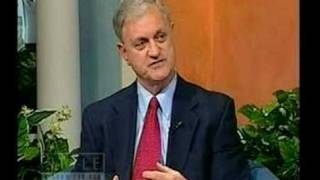Full Title: The tribute of the pioneer of hypnotherapy- Franz Anton Mesmer, MD, PhD in the history of psychotherapy and medicine
Modern hypnosis started with the Austrian physician Franz Anton Mesmer (1734-1815), who believed that the phenomenon known as mesmerism, or animal magnetism, or fluidum was related to an invisible substance - a fluid that runs within the subject or between the subject and the therapist, that is, the hypnotist, or the "magnetizer". The term hypnosis was introduced in the 1840s by a Scottish surgeon James Braid (1795-1860), who believed the subject to be in a particular state of sleep - a trance. In the late 19th century, a French neurologist Jean Martin Charcot (1825-1893) thought hypnotism to be a special physiological state, and his contemporary Hyppotite-Marie Bernheim (1840-1919) believed it to be a psychological state of heightened suggestibility. Sigmund Freud, who studied with Charcot, used hypnosis early in his career to help patients recover repressed memories. He noted that patients would relive traumatic events while under hypnosis, a process know as abreaction. Freud later replaced hypnosis with the technique of free associations. Today, hypnosis is used as a form of therapy (hypnotherapy), a method of investigation to recover lost memories, and research tool. According to Caplan & Sadock, F.A. Mesmer is generally thought of as the fons et origo of modern psychotherapy; and from the early techniques of mesmerism, it is said, have evolved the more elaborate and sophisticated therapeutic measures of the analyst and his colleagues. Although Mesmer was certainly dealing with individuals suffering from a variety of neurotic disorders, and though the clinical successes he achieved were the result of psychological processes that his procedures induced in his patients, Mesmer's theoretical formulations, his understanding of the nature of the treatment he developed, and his specific procedures were all totally different from those of the 20th - century analyst. He was one of the corne stones in the development of psychoanalysis through hypnosis mainly of hysterical patients.
Acta Med Hist Adriat. 2009 Spring;7(1):49-60. Radovancevic L. Neuropsychiatric Polyclinic A.B.R., Petrova 158, 10000 Zagreb, Croatia.



















